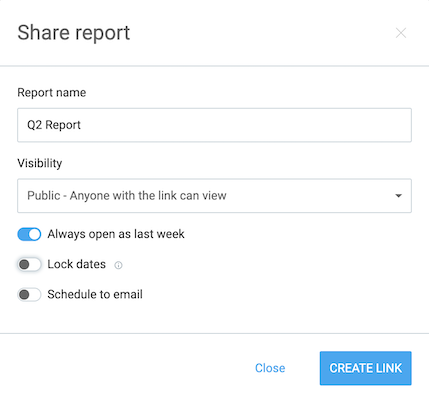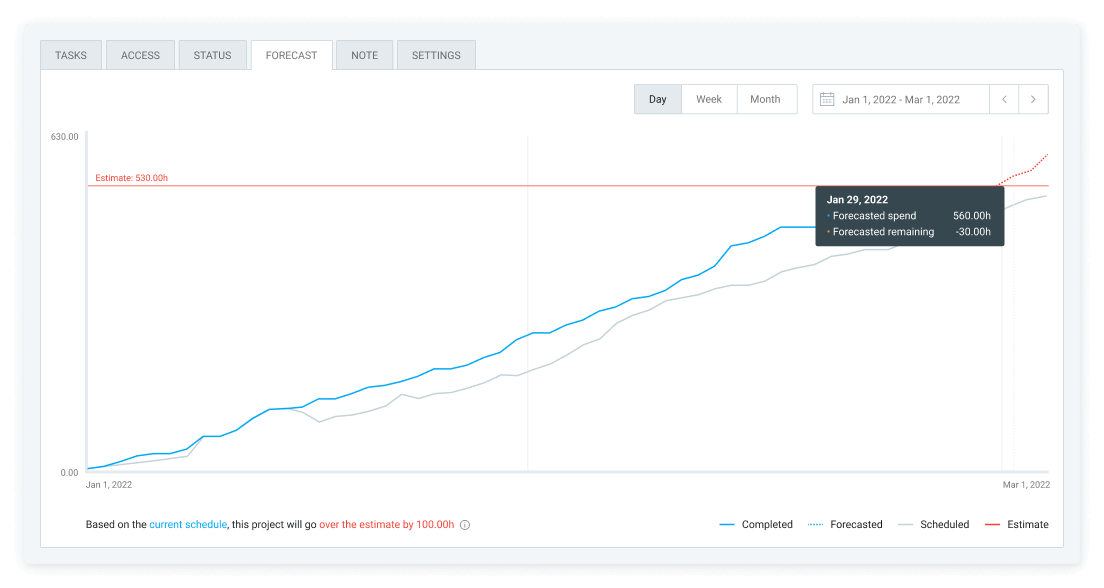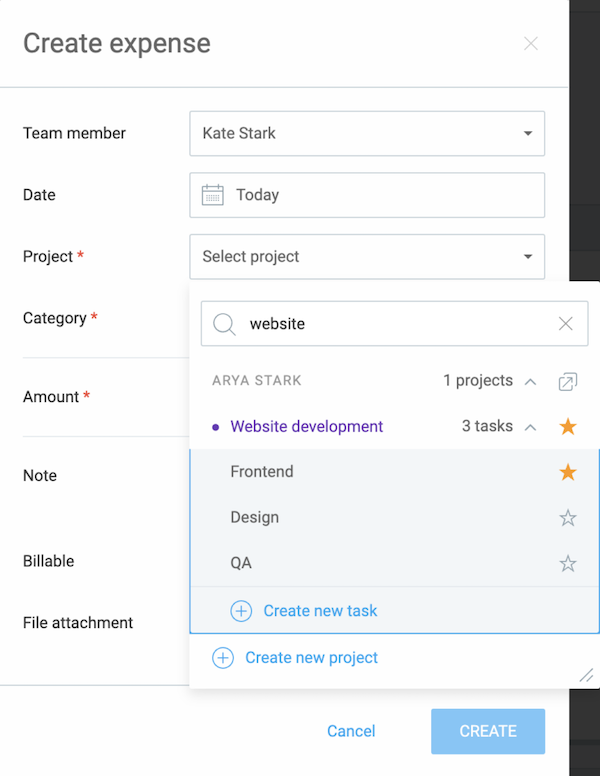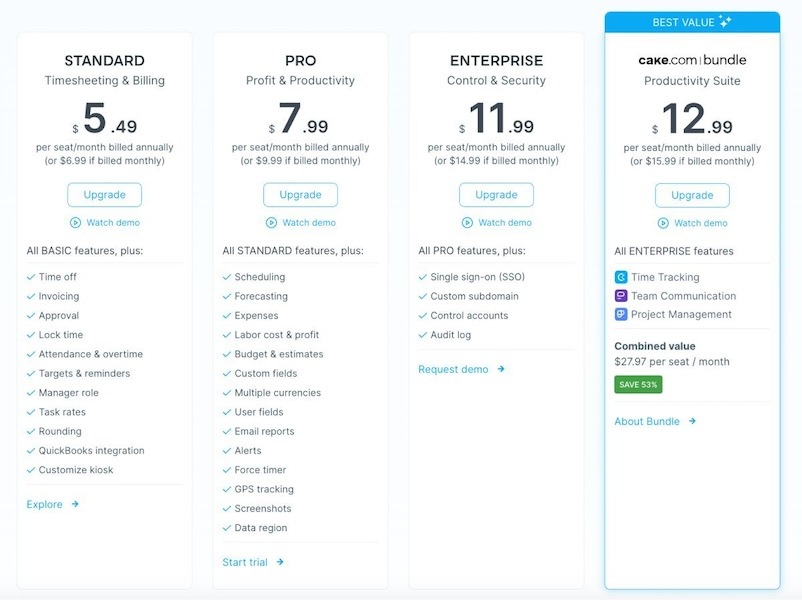As project management experts often say, “large cost overruns are the rule, not the exception.”
This sounds a bit gloomy, especially coming from researchers studying cost overruns.
But what is a cost overrun exactly?
A cost overrun, also known as a budget overrun, occurs when the project costs exceed the initially established budget.
Knowing that, the initial quote appears even more scary, doesn’t it?
Here are some tips on how to avoid or minimize project cost overruns.

Table of Contents
#1: Be diligent in the project planning phase
Despite being crucial to avoiding cost overruns, the project planning stage is often rushed due to time constraints. This can be counterproductive and cause a project delay in the long run.
So, take time to create a comprehensive project plan.
Here are some elements of a well-thought-out plan:
- Accurate project budget,
- Scope statement outlining what needs to be done to complete the project,
- Detailed schedule,
- Communication plan, and
- Extensive risk management plan.
Inaccurate cost estimates are a common problem across industries, especially in construction. For that reason, never skip any of the essential stages of cost planning, including:
- Selecting the right team to work on the cost estimates,
- Gathering data and evidence, and
- Evaluating uncertainty and risk.
It’s a good idea to create the plan collaboratively or have qualified individuals review your plan. A powerful time tracking software, Clockify, allows you to share reports so your collaborators can see tracked time and expenses in real time.

Once you have your detailed project plan in place, the work on the project can begin.
That’s not to say you’re completely out of the woods. A cost overrun can still surprise you, so be on the lookout for any warning signs.
💡 CLOCKIFY PRO TIP
If you’re struggling to make effective long and short-term plans, check out this article:
#2: Look for cost overrun warning signs
If the projected cost seems too good to be true — it probably is. But how do you know for sure that your budget estimate is too optimistic?
Here are some warning signs of an upcoming project cost overrun to look out for:
- Your team is unable to reach milestones on time.
- The project needs additional resources.
- Communication among team members is infrequent or characterized by misunderstandings.
- The project scope is unexpectedly growing.
- Some tasks need rework due to mistakes or change requests.
These are just some project hiccups that can lead to a cost overrun.
A time tracker like Clockify can help you identify cost overrun warning signs early on.
For instance, the forecasting feature predicts project performance by showing you:
- Estimated time — the time it would take to complete the project based on your estimates,
- Scheduled time — the time you scheduled when assigning tasks to team members,
- Completed time — the time tracked by team members thus far, and
- Forecasted time — the project’s expected completion time based on hours tracked by that point.

To make sure the forecasted time doesn’t exceed the estimated time — enable project alerts. The app will notify you when the project reaches a set percentage of the estimated time.
Detecting cost overrun warning signals in the beginning stages of your project allows you to implement measures that ensure your project stays within budget.
💡 CLOCKIFY PRO TIP
If you detect signs of a time overrun and can’t afford to extend the budget, consider fast tracking — give this article a read:
#3: Establish measures to manage scope creep
Scope creep is a major cause of cost overruns. It happens when the demands of a project evolve, and more steps are required to complete a project.
To successfully deal with scope creep, you’ll need a robust change control plan. This plan should clearly outline how you and your team should deal with changes in project scope.
Here are some of the steps this plan should follow:
- Identify the change,
- Determine the goals of the change,
- Define the timeline of change implementation, and
- Assemble a team in charge of change management.
Apart from creating the plan for change control, offer support to your team.
According to PMI’s 2024 Pulse of the Profession® report, supportive programs, referred to as enablers, significantly reduce the chances of scope creep. Some of the programs the report listed include:
- Coaching project managers in support of their professional development,
- Providing training when implementing changes in the work process,
- Establishing communication channels for teams to discuss and inquire about the changes, and
- Arranging change management training.
This PMI report uncovered that among the organizations surveyed, those who didn’t offer any enablers experienced a scope creep in 39% of projects. In contrast, a scope creep occurred in 28% of projects with enablers.
Preparing your team to adapt to potential scope creep ensures you can take necessary steps on time to prevent a cost overrun.
Monitor project progress with Clockify
As a time and expense tracking tool, Clockify can help you keep the project costs in check. Using a time tracking app in addition to your usual project management software helps you detect potential cost overruns early.
That’s because, in many cases, time delays increase project costs. By having your team track project time on each task, you’ll be able to detect any potential time overruns and prevent them.
Additionally, you can have your team account for all the money spent on the project by having them add expenses in Clockify. When adding new expenses, the team can define the type of cost and the amount, as well as attach receipts.

To successfully avoid a cost overrun, you’ll need tools to track time, monitor tasks, and communicate with your team. For an affordable price, you can try the CAKE.com bundle that offers our time tracker Clockify, project management software Plaky, and team communication tool Pumble.




